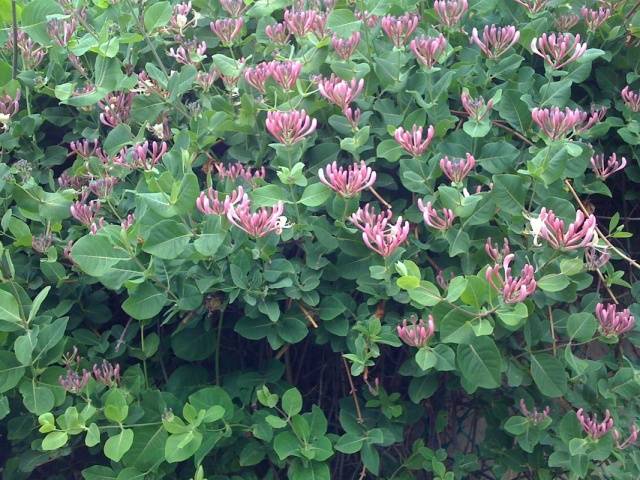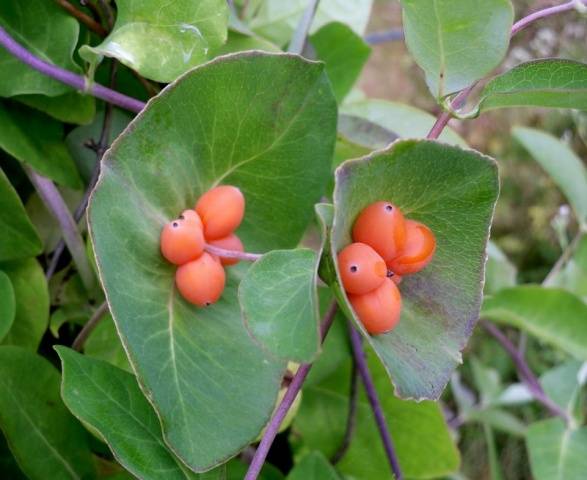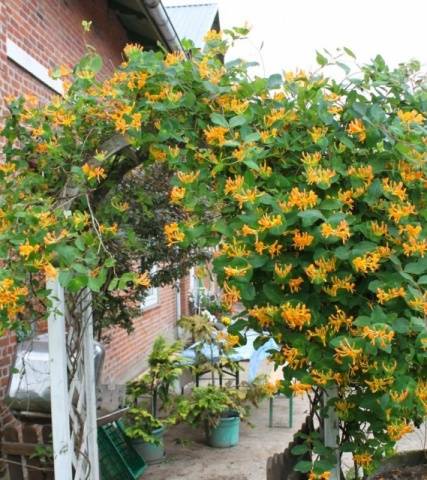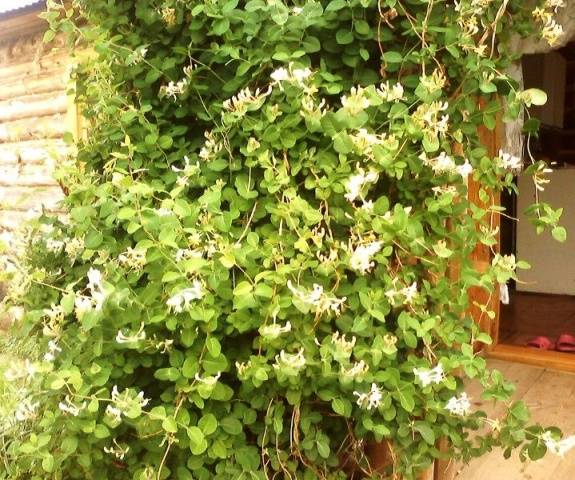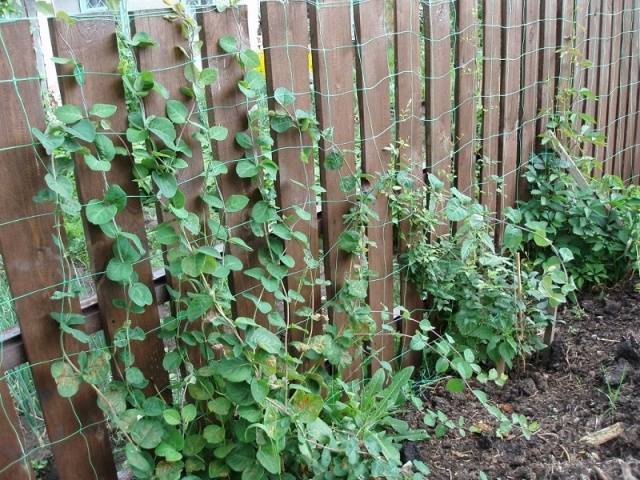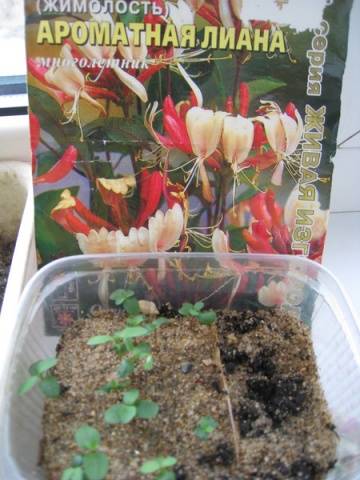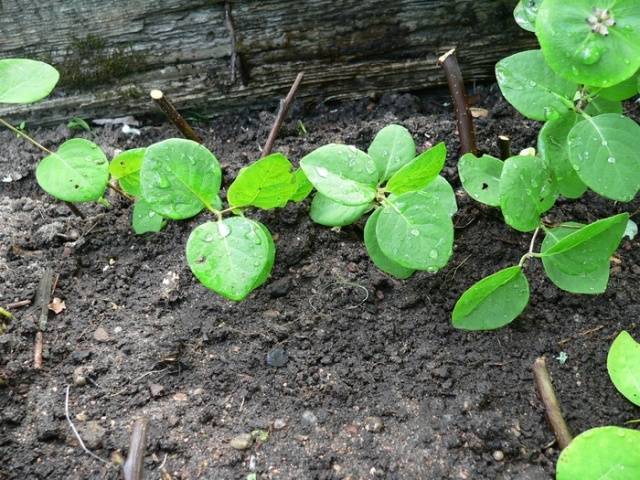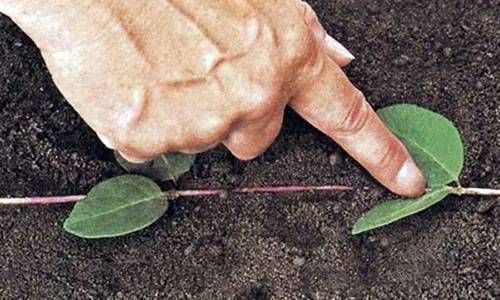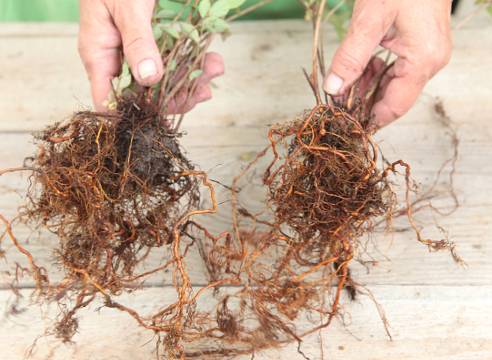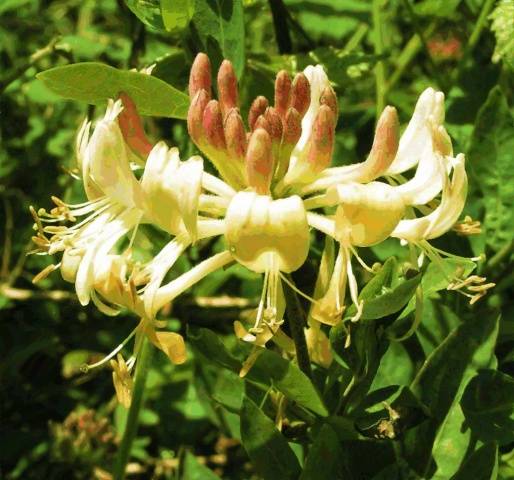Content
Honeysuckle is a type of decorative honeysuckle. It is appreciated by gardeners for its beautiful flowers and bush shape. In landscape design, honeysuckle is used for landscaping, which can be divided into two groups in appearance:
- Curly: honeysuckle, Brown, Gerald's honeysuckle, seaside, Hecroth.
- Bush: Honeysuckle Tatar, Maksimovich, Alpine, Korolkov.
Description of the plant
Honeysuckle honeysuckle - liana. The name is translated from Latin as a goat leaf. Perhaps because these animals love to feast on honeysuckle leaves. Liana is also called fragrant. Blooming honeysuckle gives off a pleasant aroma that intensifies in the evening. What honeysuckle honeysuckle looks like, look at the photo.
Leaves
Caprifol is an amazing plant in which everything is worthy of attention. Unusual liana leaves: rather large, leathery, elliptical, dark green, gray-gray to whitish underneath. They fall in late autumn. 2-3 pairs of upper leaves grow together to form a disc through which the honeysuckle stem passes.
Flowers and fruits
Honeysuckle flowers honeysuckle are located in the axils of accrete leaves, collected in groups of 5-10 flowers. Flowers are tubular up to 5 cm in length with far protruding stamens. The color of flowers inside is white or slightly yellowish. Outside with purple-red stripes or purple tinge. Each individual honeysuckle flower lives for 2-3 days. The flowering of the whole bush lasts up to 3 weeks. After flowering honeysuckle, berries are formed on a short stalk, almost lying on the leaf. The color of the liana's berries is red or orange-red. The berries are inedible. Liana begins to bloom and bear fruit after 3 years. It grows very quickly, during the season the shoots grow by 1.5-2 m. The flowering period of honeysuckle falls on the end of May-beginning of June.
Application in landscape design
In landscape design, such a wonderful plant as honeysuckle honeysuckle is used for vertical gardening... Since this is a liana, it definitely needs support for further growth. Gardeners decorate gazebos, arches, fences with curly honeysuckle, and decorate outbuildings. Honeysuckle honeysuckle can be a hedge. It is ideally combined with conifers, shrubs that bloom just as beautifully (mock orange, weigela, deytsia) and climbing roses. For examples of the use of honeysuckle in landscape design, see the photo:
Agrotechnics
Subject to agricultural technology and proper care, honeysuckle will delight you for many years. The average life span of honeysuckle is about 50 years.
Landing
Honeysuckle honeysuckle - European, loves abundant sun. Will transfer partial blackout. But it will not bloom profusely. Choose the right place for planting the plant. The soil should be fertile, rich in humus, well moistened, but the water should not stagnate. Clay soils, dense in composition, with high acidity, honeysuckle is not suitable for vines.
To plant honeysuckle, honeysuckle, dig a hole or trench to accommodate the root system. The pit is for a single plant and the trench is for a row of plants. Place a drainage layer on the bottom of the pit. This can be gravel, small pieces of brick, or sand. The soil removed from the pit, mix with fertilizers, peat, rotted manure or humus.
Add lime to acidic soil. Put some of the prepared soil in a hole, place a seedling on top of it. If the roots of the honeysuckle are large, then you can prune them.Fill the roots with the remaining soil mixture, water well. Take care to create support for honeysuckle, honeysuckle, so as not to get a shapeless lump in the future. Without support, the honeysuckle will begin to lean on itself.
The support can be cords. You can pull in any direction that is convenient for you. Coarse mesh or trellis trellis.
Care
Regular plant care consists in watering, timely removal weeds and the formation of a bush. Honeysuckle honeysuckle loves moisture. In the summer, do not allow the soil to dry out; if the season is dry, then increase the amount of water for irrigating the vines. The surface of the soil around the honeysuckle can be covered with mulch. For example, peat. Mulch is needed to create conditions for soil rippers - worms, to protect the topsoil from drying out.
Remove weeds as they arise. Perennial weeds with a branched root system must be removed before planting. Select all parts of the roots as carefully as possible.
Honeysuckle is a fast growing vine. By pruning it, you will form a bush as you wish. Leave no more than 3 shoots in a young plant. Choose the most viable ones. Delete the rest. Cut off dead shoots that have not survived the winter. As soon as the honeysuckle grows and reaches the required height, start trimming the tops to stimulate the emergence of side shoots. Then the honeysuckle will go in breadth. Pruning a plant, you not only shape it, but also rejuvenate it, promote abundant flowering. Watch the video about the intricacies of spring care for honeysuckle honeysuckle:
Reproduction
Honeysuckle is transplanted in the spring. Caprifol is not very fond of moving. Therefore, decide on a permanent place of growth. How is honeysuckle propagated? There are several ways:
- Seeds... Quite a complicated and painstaking process. Honeysuckle seeds are harvested from ripe berries. They are separated from the pulp, washed and dried. Honeysuckle seeds sprout reluctantly. In order to improve germination, stratification is carried out. An artificial process to activate the natural powers of the seed. In nature, seeds fall to the ground in the fall, are dormant, in order to germinate in the spring. Stratification is an imitation of natural conditions. For this, honeysuckle seeds, honeysuckle, are placed in a container with wet sand and placed in the refrigerator on the lower shelf. Withstand about 2-4 weeks. The sand must be moistened. Next, the honeysuckle seeds are ready for planting. Place the seeds in a container with nutrient soil, slightly sprinkling with soil. Spray with water, cover with glass or plastic. After emergence, the glass can be removed. After the sprouts of the honeysuckle get stronger, they can be transplanted to a permanent place. Be sure to cover for the winter. For example, spruce branches.
- Cuttings... Harvesting of honeysuckle cuttings occurs after the bush has faded. Not all shoots are suitable for cuttings. Cuttings from older shoots will take root best. If they break well, then they are suitable for grafting. The cuttings are 10 cm long and must have 2 - 3 internodes. Cut the top at a right angle and the bottom at 45 degrees. Plant honeysuckle cuttings for rooting in a greenhouse in a mixture of garden soil, peat and sand in approximately equal proportions. The first leaves will appear in a month. In spring, it can be planted in open ground.
- Layers... The easiest way to breed honeysuckle is honeysuckle. In spring or autumn, bend the branch to the ground and secure it with staples. Sprinkle with earth. For effective rooting, prepare the soil by mixing it with peat. In the spring, separate the rooted parts from the parent honeysuckle bush and plant in a permanent place. This method is good when creating a hedge, then the layers are not separated, they continue to grow on their own.It is only necessary to install a support for young plants.
- By dividing an overgrown bush... Here are 2 ways. First: to bare the roots of the bush and cut off the shoot with roots. Second: dig up the entire honeysuckle bush and, using a shovel, divide the bush into parts, which can then be transplanted into new permanent places. Treat the sections with ash. And shorten the shoots slightly. After a year, the plant will need pruning to form the crown.
Top dressing
Honeysuckle honeysuckle will delight you with rapid growth and abundant flowering, if it is regularly fed.
- Autumn is the best time to apply potash and phosphate fertilizers. To do this, fertilize the plant with humus or rotted manure.
- Apply nitrogen fertilizers in the spring. Pour with slurry or infusion of bird droppings, after diluting with water: 1 part of the infusion and 10 parts of water.
Disease protection
Examine honeysuckle honeysuckle to notice damage in time and take action.
- Enemy number one for honeysuckle is aphidswhich sucks out the plant's vital juices. External signs of a threat are yellowing and falling leaves. Aphids can be destroyed by spraying the bush with drugs: "Inta - VIR", "Eleksar", "Conifor".
- Fungal lesions cause wilting of leaves, reddish tubercles appear on the bark. Affected shoots should be removed. The entire bush must be treated with copper sulfate in the spring as a preventive measure.
- Viruses cause variegation on the leaves. Unfortunately, the bush will have to be dug up and burned. But you can fight for the plant by spraying it with copper sulfate or Fundazol.
Conclusion
Do not be afraid of diseases and insects - pests. Honeysuckle honeysuckle is a very beautiful and spectacular plant that does not need laborious care. If you settle it in your garden, then for many years this creature will delight your eyes with its unique appearance.
